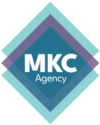No, it’s not just Big Business Card looking to make an extra buck in inventing new business classifications—an SDR plays a dynamic and essential role in the ecosystems of many modern sales teams.
A Sales Development Representative has been a role that was once niche in small tech companies. Their prime task is to locate and qualify leads from the seas of businesses that make themselves available online or through networking avenues such as trade shows or public listings.
This blog will discuss what differentiates the SDR position from those of a salesperson or a business development professional. By the end, I hope you can begin to understand the value of this role and what it offers businesses—especially those focused in B2B, marketing, and technology.
Let’s get into it and answer that all-important question: What is an SDR?
Are They Not Just A Salesperson?
The first point of reference for understanding a sales development representative role is that no, they are not a salesperson! Even with the word “sales” in the name, the two roles differ in a few crucial ways.
| Sales Development Representative | Salespeople |
| Primarily qualify leads. | Primarily close sales deals. |
| Focuses on outreach. | Focuses on nurturing and closing leads. |
| Educates leads on products. | Builds and ships proposals and closes. |
These differences are more important for B2B businesses than they are for B2C purposes.
With B2C, the customer approaches brands with their desire realized, i.e., for a specific product or service. With B2B, there is a lengthier qualifying process that sees the organizations entering into a mutually beneficial set of terms and agreements for the duration of their partnership.
The complexity of these processes and the myriad of entanglements that a robust B2B business can address make the SDR a vital part of the sales pipeline through the process of qualification mentioned above.
Why Qualifying Leads Is Essential For B2B
When organizations grow, the processes that could once be handled by a small group of individuals become more complicated. Some businesses will choose to implement digital solutions, while others will grow an in-house team that oversees even more professionals across their areas of focus.
In short, it can get messy. The job of an SDR is to look “through” these processes and identify the need for the product their company sells. This technique could be called gap-selling or qualifying.
When a lead is identified correctly, it saves heaps of time for your sales team. The prospect now has a clear motive for speaking with your sales development team since they can visualize the possible impact of your relationship.
More qualified calls lead to more sales as each part of the pipeline is allowed to hone their strategies and focus on what gets them results. Furthermore, it is much easier to understand what is happening in your pipeline through carefully delineated roles within your organization. And as we all know, visibility is your best friend for generating and understanding performance metrics.
A sales professional is your heavy-hitter—they understand the techniques and trends that make for smooth closes. Often, they have privileged access to deals, amendments to packages, and offerings that will better suit the demands of the client they are prospecting.
With that being said, it becomes clear that their efforts are best spent where they can convert clients—not trying to pull leads out of cold outreach and lead generation.
Putting the right people in the right seats is a cornerstone of all effective marketing strategies, and training them will be your key to full employee activation.
Whether you’re looking to automate your marketing, grow your inbound through outsourced lead generation, or train your existing team, Megan Killion Consulting services are perfect for you. Contact me today to get started on growing your SDR strategies, inbound, and high-conversion marketing.

